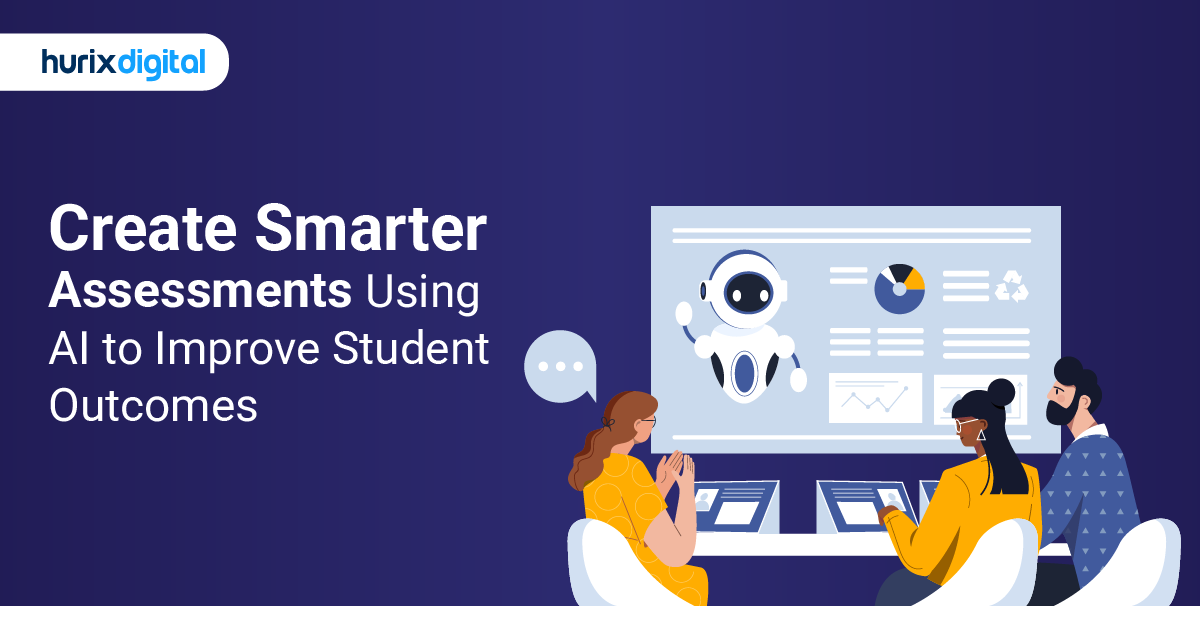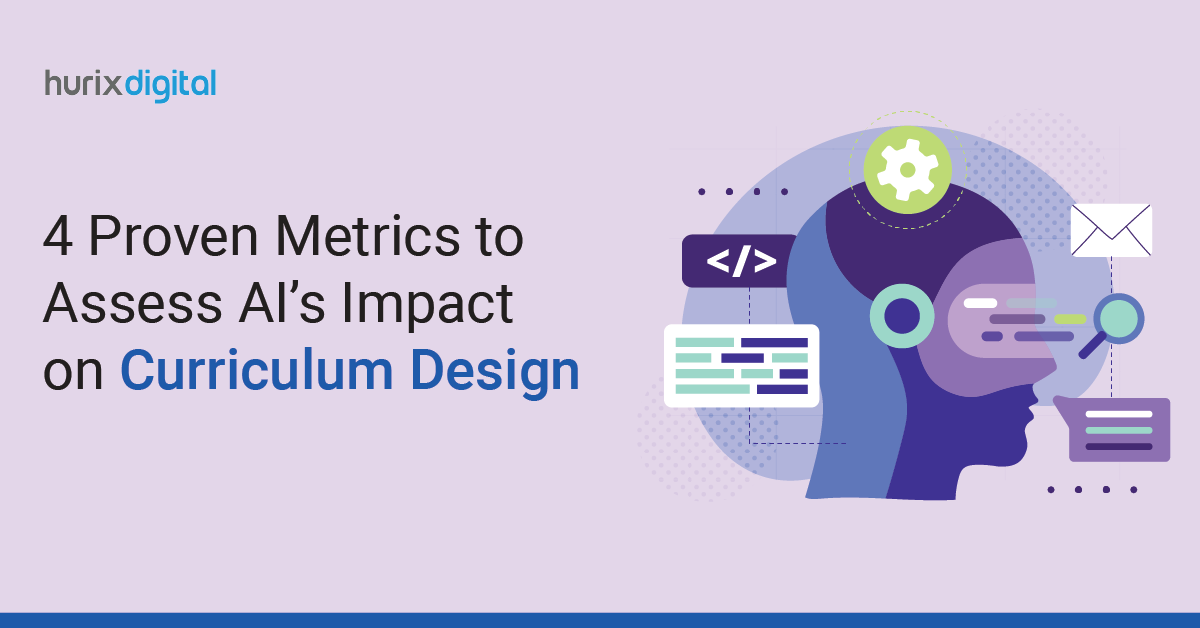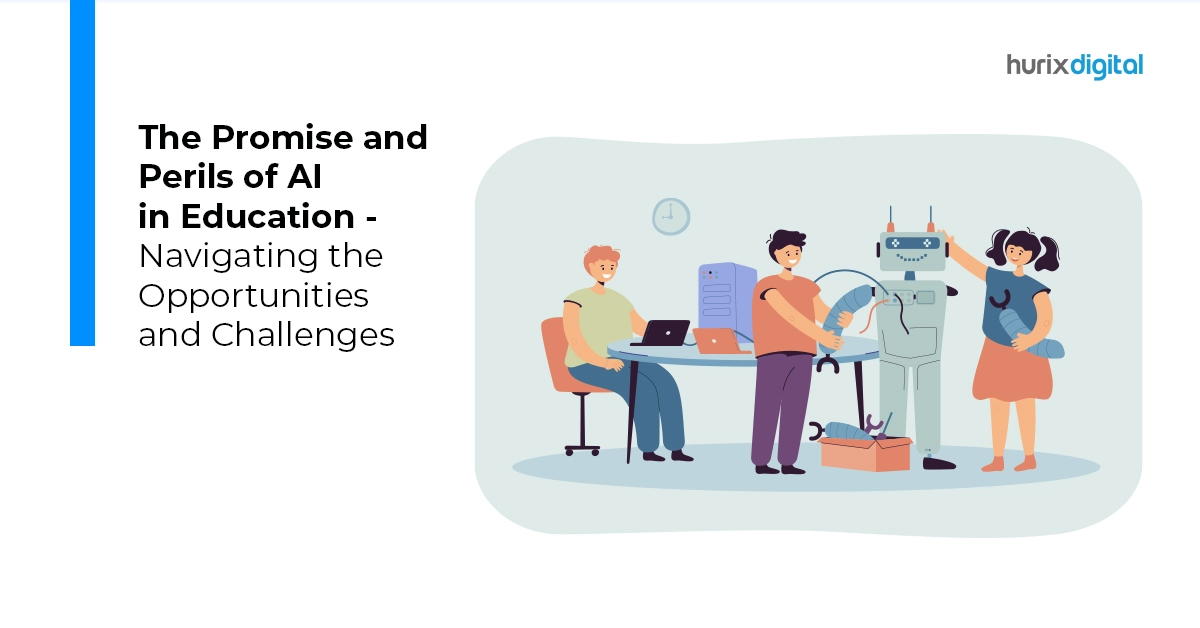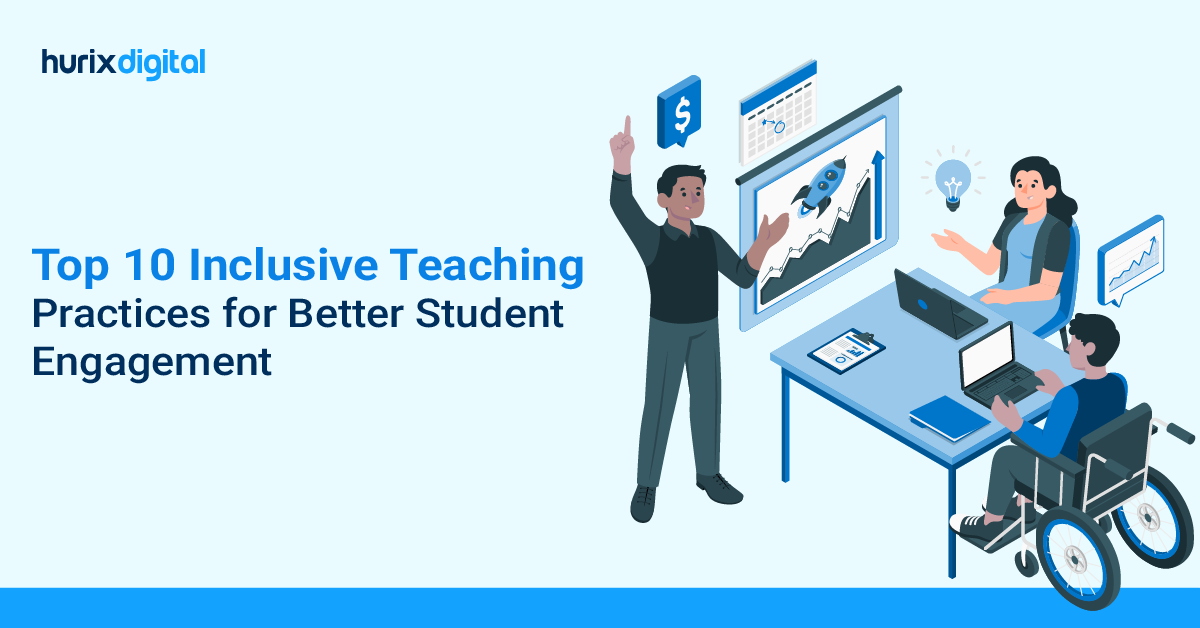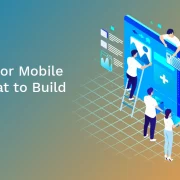
7 Roles of (AI) Artificial Intelligence in Learning and Development
The research firm Markets and Markets predicts the AI market will grow to a $1,339.1 billion industry by 2030. So, AI is slowly becoming omnipresent in our lives. Some people are even scared of a complete AI win over humans!
While that is undoubtedly an exaggeration, we have weaved AI into our daily lives and activities. Even a simple search on Google now has AI providing you with answers.
AI has improved numerous businesses by performing translations, research, art creation, fraud detection, logistics optimization, and many other jobs. Hardly any industry has not profited from artificial intelligence.
For instance, AI has been applied in medicine to identify fractures, cancer, and strokes. Businesses also utilize it extensively for staff training. AI tools for training and development are already widely used by companies in their learning strategies.
With such varied applications, it is no surprise that AI has been impacting the learning and development sectors. This blog will explore these impacts and how they can change the future of learning and development.
Table of Contents:
- Why is AI Important in Learning and Development?
- What is the Role of Artificial Intelligence (AI) in Learning and Development?
- What are the 6 Tech Innovations of Artificial Intelligence in Learning and Development?
- Practical Applications of AI in Learning and Development
- Successful Case Studies
- Final Thoughts
- Frequently Asked Questions
Why is AI Important in Learning and Development?
AI, or artificial intelligence, is the computer system simulation of human intelligence processes. The sync between AI and learning and development can improve and augment learners’ educational experiences.
Here is the contribution of AI for Learning and Development functions:
- Personalized Learning: AI makes creating unique learning experiences for every student possible. This can be achieved by evaluating students’ performance and modifying the course material or curriculum to suit their interests and requirements.
- Intelligent Tutoring Systems: AI-powered tutoring systems can provide learners with personalized feedback and guidance as they work through the curriculum. These systems can also analyze learners’ performance and adapt the instruction to their needs.
- Automated Content Creation: AI can create educational content, such as videos, quizzes, and other interactive materials. Using AI in training and development can save educators and trainers time and resources.
- Adaptive Testing: AI for Training & Development can create adaptive tests that adjust the difficulty of the questions based on the learner’s performance. This can provide a more accurate assessment of the learner’s knowledge and skills.
- Chatbots and virtual assistants: AI-powered chatbots and virtual assistants can provide learners with 24/7 support, answering their questions and providing guidance on the material.
- Predictive analytics: AI in Learning and Development can predict student performance, identify at-risk students, and provide personalized interventions to help them improve.
AI in Learning and Development is a fast-growing field, and new uses of AI in education are always being developed. AI enhances student learning, boosts training efficacy, and gives students a more individualized and effective education.
Also Read: 8 Challenges and Solutions in Localizing Training Programs for a Diverse Workforce
What is the Role of Artificial Intelligence (AI) in Learning and Development?
1. Identifying Knowledge Gaps
Most enterprise learning strategies depend on holistic teaching. This means having the same course materials for all employees. However, not all employees are the same. Some may already have a skill that the job needs. So, forcing them to learn what they already know is not a very effective strategy.
AI in Learning and Development can analyze huge data sets and derive conclusions about employee training needs using machine learning and predictive analysis technologies. AI can also create learner profiles combining disparate data sources, which would take days if done manually. This automatically identifies the skills missing in your employees in a very short span.
This concept is already in use. Popular online training providers can use AI to measure an organization’s learner performance, skills, and knowledge gaps. Once the gap is identified, the L&D team can work on adapting their training approach to meet the knowledge gap. This makes learning more effective and doesn’t waste crucial employee hours.
These uses of AI in education, training, and development enhance the learning experience, improve the effectiveness of instruction, and provide learners with more personalized and efficient education.
2. Suggesting the Most Appropriate Content
AI can identify knowledge gaps and automatically scan for the most appropriate content for the learner. We all know how that works, as we have all used Google to search for information.
Just like Google, AI can scan the Internet, LMS, your proprietary content, and other sources to auto-suggest the most relevant content. This approach saves learners time, as they don’t have to manually go through multiple pages of search results for hours.
3. Creation of Digital Content
Creating educational content is time-consuming and challenging. For this reason, most enterprises outsource their content creation at a high cost. AI can help organizations save time and money.
We discussed how AI can source information snippets and digital resources from the Internet and other connected platforms. The same AI technology can also consolidate and present them in an easy-to-understand manner.
AI, through natural language processing, can even convert videos into texts. You can convert whole podcasts, webinars, and lectures into written words without any effort. This is similar to the way YouTube provides automatic subtitles in videos.
4. Personalize Learning According to the Learner
AI can personalize learning according to the pace, age, gender, and demographics of the learner. It can also gradually release materials to the employee as she/he finishes a chapter or a module.
For example, you want to train an experienced employee in customer management. AI can automatically scan the employee’s skills and skip the basic training materials to suggest advanced resources.
AI technology also aligns learning with the employee’s learning style. Research has shown that each of us learns in a different style. Men know better in some ways, while females have their own learning styles. Older adults, again, have a preferred way of learning that is not very effective for youngsters.
AI can track and identify employee learning styles and optimize the learning experience for the best results. Personalized learning leads to greater retention, higher recall, and improved learning.
5. AI as a 24/7 Digital Tutor
AI eliminates the need for a human trainer to some extent. Your employees may have many questions while training or taking a new course.
Most of these queries are common and standard for all learners. In traditional approaches, the employees would have to ask the trainer to resolve their queries, so they would have to wait for the trainer’s availability.
AI helps address these queries and even provides accurate answers.
Enterprises can use AI-based chatbots to help learners get answers to the most common questions. The whole process is done in human conversation, just as you would chat with a customer care representative.
6. Seamless Assessments and Instant Feedback
With AI, enterprises do not need human efforts to assess learning. AI-driven tools can gather information, evaluate performance, check answer sheets, and provide accurate results. Employees can get feedback instantly and learn how they perform.
AI can be used to deliver any assessment as long as it’s digital. You can develop various assessment techniques and deliver them to your employees. Additionally, AI can even help personalize assessments. Most tests or quizzes are created based on a ‘one-size-fits-all’ approach. They don’t consider IQ, skills, or other such factors.
Using AI, employees can take tests based on their capabilities, skills, and learning levels. This creates a more accurate performance evaluation system and eliminates situations where some find the test too hard and others too easy.
7. Developing Crucial Insights
Here’s how AI can gain important insights for you:
- AI can mine LMS data and employee performance, collect feedback, and facilitate a range of analytics.
- Enterprises can use the data to form insights into their learning and development.
- AI finds out the effectiveness of courses, areas for improvement, and crucial trends and patterns.
- The insight gained from using AI in training and development helps you refine your content and courses.
- AI collects data continuously so that you can always make informed business decisions.
How to use AI for Learning & Development?
AI can revolutionize learning and development by providing personalized learning paths, instant feedback, and adaptive content delivery. Start by using AI-powered platforms like chatbots for quick knowledge queries and concept explanations, or tools that create customized learning materials based on individual progress and learning styles. Leverage AI for automated assessments to identify knowledge gaps and suggest targeted resources. For practical skills, use AI simulation tools that provide safe environments for practice and experimentation. Consider implementing AI-driven recommendation systems that suggest relevant courses or materials based on learning history and career goals. Additionally, use AI analytics to track learning progress and adjust training programs accordingly.
How will AI Change Learning and Development?
AI is poised to transform learning and development by enabling highly personalized learning experiences that adapt in real-time to each individual’s pace, style, and needs. Through technologies like natural language processing and machine learning, AI can create custom curricula, provide instant feedback, and identify knowledge gaps more effectively than traditional methods. It will automate routine administrative tasks, allowing L&D professionals to focus on higher-value activities like strategy and personal coaching.
What are the 6 Tech Innovations of Artificial Intelligence in Learning and Development?
- Personalized Learning: AI in Learning and Development can create customized learning experiences tailored to learners’ needs and preferences. For example, AI-powered learning platforms can assess a learner’s progress and adjust the content and difficulty of the material accordingly.
- Adaptive Learning: AI can create adaptive learning systems that adjust to learners’ progress and provide additional support or challenge.
- Automated Grading: AI assists in grading assignments and assessments, freeing instructors to focus on more high-level tasks such as providing feedback and engaging with students.
- Learning Analytics: AI in Learning and Development analyzes student learning and performance data and provides insights that better the learning experience and inform instructional decisions.
- Virtual Instructors: AI can be used to create virtual instructors or tutors that can provide personalized instruction and feedback to learners.
- Translation: Translate course materials and other learning resources into different languages with AI, making them more accessible to learners worldwide.
Also Read: 7 Benefits of Using AR and VR Technology in Employee Training
Practical Applications of AI in Learning and Development
Artificial intelligence in training and development has revolutionized the operations of L&D departments, allowing for more efficient, personalized, and scalable solutions. Discover some of the practical applications where AI is making a significant impact:
1. AI for Content Personalization
AI tailors learning paths to fit each employee’s unique profile, assessing their progress and recommending personalized content that aligns with their learning needs. Platforms like LinkedIn Learning use AI for learning and development, suggesting courses tailored to job roles, past learning experiences, and skill gaps.
2. Enhanced Learning Analytics
The power of AI to analyze extensive datasets enables organizations to uncover valuable insights into learner behavior, engagement, and outcomes.
Moodle, an AI-powered learning management system, can predict learner performance and provide suggestions to enhance their experiences.
3. Training in Virtual Reality (VR) and Augmented Reality (AR)
AI for training and development helps create immersive training experiences using VR and AR technologies.
Companies like Walmart employ VR headsets to create immersive real-world scenarios for employee training, boosting learning retention and readiness.
4. Automated Content Creation
AI in training and development makes it easier to produce training materials by streamlining tasks like quiz generation, content summaries, and assessments. Many platforms empower L&D teams to produce AI-generated videos for employee training, significantly cutting down on content creation time.
5. Language Translation and Accessibility
AI-powered translation tools like Baidu make learning accessible by overcoming language barriers. These tools use deep learning to precisely translate training materials, allowing organizations to connect with a worldwide audience.
Successful Case Studies
Numerous organizations have successfully harnessed AI for learning and development, highlighting its transformative potential.
1. Cohesity’s AI-Powered Training Videos
Cohesity, a data management company, used an AI called Synthesia AI to produce training videos efficiently and at scale. They automated the video production process, leading to an incredible 200% increase in viewer engagement. On the flip side, the company significantly reduced its production timelines.
Such an innovative AI-driven approach allowed subject matter experts within the company to easily create videos. As a result, retention rates improved, and training cycles were shorter.
2. Microsoft’s Accessibility Solutions
Microsoft has designed tools such as Seeing AI to assist individuals with disabilities in participating in more inclusive learning environments.
With its help, visually impaired users can learn about their surroundings, texts, and people. Of course, the tool has also assisted its users in successfully participating in digital training.
Also Read: Transforming Education with Smart Classrooms: The Role of AI
Final Thoughts
No one can doubt the potential of Artificial Intelligence (AI) in revolutionizing the learning and development sector. Many enterprises are already capitalizing on its power to speed learning and enhance engagement.
AI allows rapid knowledge transfer and boosts efficiency, interaction, and recall, making it a game-changer in the training and development landscape.
With AI capabilities, companies can create personalized and dynamic learning experiences, leading to higher knowledge retention rates and a more skilled and productive workforce.
Get in touch with us to implement AI-based workforce learning solutions.
Frequently Asked Questions
Q1. How does AI personalize learning experiences?
I can analyze performance, preferences, and learning styles to customize educational experiences. By offering personalized content, adaptive assessments, and targeted feedback, learners receive tailored and engaging materials that cater to their specific needs.
Q2. What are some examples of AI applications in learning and development?
AI applications in learning and development encompass intelligent tutoring systems, virtual reality simulations, learner support chatbots, automated grading tools, content recommendation systems, and data analytics for optimization.
Q3. Can AI replace human instructors or trainers?
AI is designed to augment, not replace, human instructors and trainers. It automates repetitive tasks, offers insights and recommendations, and enables instructors to concentrate on mentoring, facilitating discussions, and providing personalized learner support.
Q4. What are the ethical considerations for using AI in learning and development?
Ethical considerations of using AI in learning and development include ensuring data privacy and security, maintaining transparency and accountability in AI algorithms, avoiding biases in content and recommendations, and promoting fair and equitable access to AI-enabled learning tools.
Q5. Are there any limitations or challenges with AI in learning and development?
The challenges in AI for learning and development involve data quality, algorithm biases, fairness monitoring, ethical considerations, and AI’s supportive role alongside human expertise.
Q6. Can AI improve learner engagement and motivation?
AI enhances learner engagement and motivation through interactive and immersive experiences, adaptive content, gamification, and instant feedback. AI-powered virtual assistants and chatbots provide real-time personalized support.


